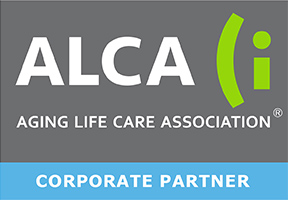At a Glance:
- Cost Predictability: Retirement communities offer fixed monthly fees, while aging in place includes unpredictable home maintenance and care expenses.
- Care & Support: On-site services simplify aging in a community, whereas staying at home may require hiring caregivers and making home modifications.
- Lifestyle & Socialization: Retirement communities provide built-in activities and social connections, while aging in place may require extra effort and costs to stay engaged.
Deciding between aging in place and moving to an independent living community is a major choice that impacts both lifestyle and finances. While staying at home may seem like the more familiar option, it’s important to weigh the true cost of maintaining a comparable lifestyle. Independent living communities offer convenience, social opportunities, and amenities that can enhance quality of life—often at a cost that makes financial sense. Understanding these lifestyle costs is key to making an informed decision about the best path for retirement. 1,2

What is a Continuing Care Retirement Community?
A Continuing Care Retirement Community (CCRC) is a senior living option that offers a range of housing, amenities, and services designed to support an active and fulfilling lifestyle. These communities provide a maintenance-free living experience, allowing residents to enjoy their retirement without the burdens of home upkeep. Common amenities include restaurant-style dining options, housekeeping services, scheduled transportation, and a variety of social and recreational activities. Many CCRCs also feature on-site fitness centers, game rooms, libraries, and beautifully landscaped outdoor spaces. What sets a CCRC apart is its continuum of care, offering independent living, personal care, and memory care on the same campus. This allows residents to transition seamlessly to higher levels of support as their needs change, providing peace of mind for both seniors and their families. 3,4
What is meant by Aging in Place?
Aging in place refers to the decision to remain in one’s own home while adapting to the changing needs of aging. This option allows seniors to maintain their independence in a familiar environment, but it often requires modifications and support services to ensure safety and quality of life. Home modifications such as wheelchair ramps, stair lifts, walk-in showers, and wider doorways may be necessary to accommodate mobility challenges. Additionally, in-home care services—ranging from personal care and housekeeping to skilled nursing and therapy—can be arranged on an hourly or live-in basis. Other common expenses include property maintenance, grocery shopping and meal delivery, transportation costs, and home security and emergency response systems. While aging in place provides comfort and flexibility, costs can rise significantly as care needs increase, making it essential to carefully evaluate long-term affordability and support options. 2,4
Comparing Lifestyle Costs
When considering whether to move to a retirement community or age in place, it’s essential to evaluate the full financial picture. Beyond just rent or mortgage payments, factors like home maintenance, care services, and social opportunities can significantly impact both cost and quality of life.
Housing and Rent/Ownership
- Retirement Community: Residents typically pay a monthly fee that covers housing, amenities, and select services. Costs vary based on the type of community, accommodations, and included services.
- Aging in Place: Homeowners must continue paying mortgage and/or HOA fees (if applicable), property taxes, homeowner’s insurance, and utility bills. Additionally, home modifications may be needed to ensure accessibility.
Home Maintenance and Upkeep
- Retirement Community: Services such as housekeeping, landscaping, and general maintenance are included, reducing the burden on residents.
- Aging in Place: Homeowners are responsible for repairs and upkeep as well as lawn care and maintenance. These responsibilities can become costly and physically demanding over time.
Care and Support Services
- Retirement Community: Many communities offer on-site healthcare services, assistance with daily tasks, scheduled transportation, and meal options, ensuring residents receive the support they need as they age.
- Aging in Place: Seniors may need to hire in-home caregivers for personal care and medication management, as well as arrange transportation to doctor’s appointments. Other costs will include meal delivery and groceries as well as other household essentials.
Social Activities and Community Engagement
- Retirement Community: A built-in social environment with planned activities, fitness programs, and community events fosters engagement and reduces isolation.
- Aging in Place: Staying socially active may require additional expenses for transportation, club memberships, or event participation, which can become more difficult with mobility challenges.
While both options come with financial considerations, the overall value of a retirement community often extends beyond cost, offering convenience, social connection, and peace of mind. 1,2
Final Considerations: Cost vs. Value
While aging in place may seem less expensive at first glance, the true cost includes more than just mortgage or rent. Ongoing home maintenance, increasing care needs, and expenses for staying socially engaged can add up quickly—often surpassing the predictable monthly costs of a retirement community. Additionally, hidden expenses such as emergency repairs, home modifications, and unexpected medical costs can make aging in place more financially unpredictable.
To get a clearer picture of your options, use our Cost Comparison Calculator to compare the expenses of remaining at home versus moving into a retirement community. By factoring in all costs—both obvious and hidden—you can see the full financial picture and make a more informed decision about where you’ll receive the most value, stability, and peace of mind.

References
[1] “5 Reasons to Choose an Independent Living Community.” Monticello West, 31 Dec. 2024, monticellowestlcs.com/blog/independent-living-community-vs-staying-home/.
[2] “Is Independent Living Worth the Cost? A Value Comparison.” Bruceville Point, 11 Nov. 2024, brucevillepoint.com/comparing-independent-livings-cost-vs-value/.
[3] “The Birches on Maple.” Independent Living Comparing the Cost versus Value, www.liveatthebirches.com/independent-living-comparing-the-cost-versus-value. Accessed 4 Feb. 2025.
[4] “Senior Living vs. Staying at Home: Comparing the Pros and Cons.” Navion Senior Solutions, 24 Feb. 2022, navionseniorsolutions.com/senior-living-vs-staying-at-home-comparing-the-pros-and-cons/.
The information provided in the article is for general informational purposes only. This information is not a substitute for medical advice. Accordingly, before taking any actions based upon such information, you are encouraged to consult with the appropriate professionals.






